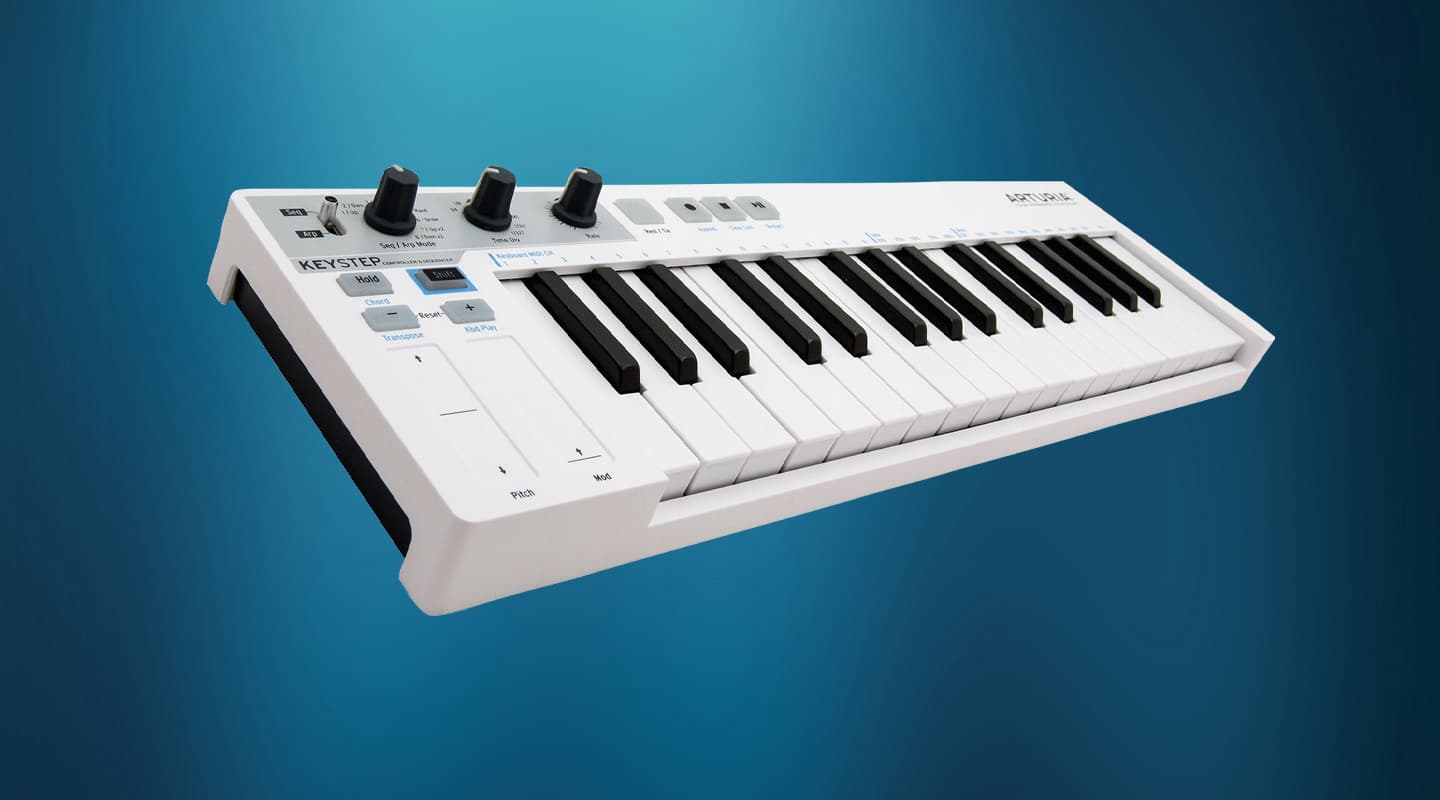
Review: Arturia Keystep Controller & Sequencer
There’s a good chance you already have a MIDI controller sitting in your studio, but does it do as much as Arturia’s tiny KeyStep?
Arturia has worked hard to ensure KeyStep isn’t just another MIDI controller. Its built-in arpeggiator and sequencer gives it a useful creative edge when making music, jamming with mates, and performing live. Second, it speaks more than just MIDI. KeyStep has CV I/O for connection to your analogue synths — a useful feature if you’ve wanted to control your VIs and modular gear from the same unit.
KEY COMPONENTS
Build quality is second to none. The keys feel pleasantly squishy but can take a decent thrashing. I’m not a fan of mini-keys but for whatever reason the KeyStep didn’t really bug me — probably because it’s unashamedly a synth controller and not trying to be a hammer-action set of ivories worthy of Beethoven’s Fifth. Besides that, the starting note of F always feels a bit random and aftertouch requires some muscle. But again, don’t hold back. It can take heavy-handedness.
Touch-sensitive ribbon pads control pitch bend and modulation. If you’re normally the wheels type like me, don’t worry, KeyStep’s sliders feel natural and let you do everything you could with wheels or joysticks, plus more — you can jump directly to a different pitch or modulation setting by touching a position on the pad.
ARP-ING ON
If you’re looking for fun, look no further than the arpeggiator. It’s super easy to nut out when you’ve got so few controls in front of you. Switch the left-most lever to Arp, hit the Play button, hold down some notes, and behold, an arpeggio. You can vary the swing amount and gate time by holding Shift and pressing the appropriate key on the keybed.
The Hold button is accessibly placed below the Arp/Seq switch to prolong chords when the keys aren’t depressed. All the popular arpeggio patterns are available with the Mode knob, and the Time Div control adjusts the subdivision of the arpeggiated notes. Remember to have this on the correct setting before kicking off your loop to get the most out of the other subdivision options mid-performance — i.e., if you’re looking for 16th notes, set the knob to 1/16 and then adjust the tempo knob to suit. Being able to dial in a numerical BPM value would’ve been useful here. Press the Shift button while toggling the Time Div knob to avoid triggering all the in-between timings.
If the arpeggiator doesn’t float your boat, try the sequencer for a second shot at endless merriment. Arturia’s attention to detail and flair for producing innovative functionality shines. Take one look at KeyStep and you’d probably assume its sequencer is only capable of stock ’90s Casio keyboard progressions. Nope — this tiny controller actually lets you get pretty deep into the art of sequence building.
KeyStep can store eight sequences, each of which can be up to 64 steps. Its polyphony allows up to eight simultaneous notes with each step. You can input notes by hitting Record and play them in with the switch set to Seq. There are heaps of ways to customise a sequence right at the note-input stage, so it pays to have a good read of the manual. You can back up your sequences to Arturia’s MIDI Control Center software, which also gives you options to do deeper configuration-type stuff with your DAW/VIs, etc.
CREATION STATION
There’s so much more functionality crammed into this little thing — like clocking it externally, syncing a network of gear via the DIN jacks, compositional tools when paired with MIDI Control Center and, of course, controlling analogue synths using the CV outputs. There’s effectively four modes in which KeyStep can be run, dictated by the little dipswitches on the rear which tell the unit whether it’s a master or slave device, and to what.
To be honest, I didn’t expect the KeyStep to enhance my creativity as much as it did. Its ease of use and ‘get-out-of-the-way’ controls meant I came up with some out-of-character parts, simply because I could. I mean, who arpeggiates a glockenspiel for an ambient track? But this little keyboard’s inviting workflow made me want to arpeggiate or sequence whatever I possibly could — it was just so easy and fun. And more importantly, it inspired creativity in ways I wouldn’t have explored without it.
















RESPONSES